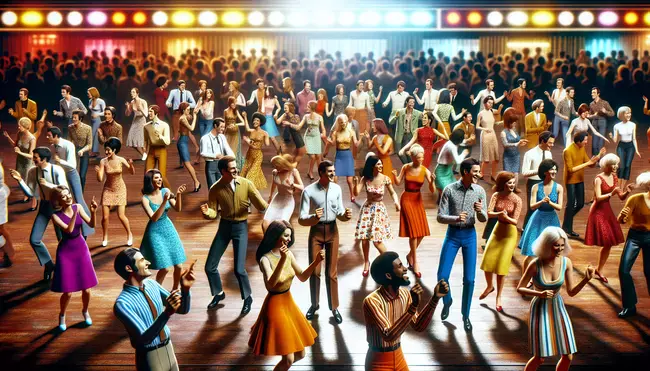Rhythms of Nostalgia: A Call to Clap and Connect | The Clapping Song | Shirley Ellis
 AI Artistic interpretation of The Clapping Song by Shirley Ellis
AI Artistic interpretation of The Clapping Song by Shirley Ellis
"The Clapping Song" by Shirley Ellis has an undeniable rhythm that encourages listeners to get up and move. This American artist, known for her soulful R&B music, released the song in 1965. It became an instant success, both for its catchy tune and its ability to engage audiences with its percussive clapping component.
The song's lively tempo and engaging beat easily overshadows the lyrics. Upon closer inspection, however, the song presents an intriguing combination of childlike verses and rhythmic patterns. It carries the essence of the pat-a-cake rhymes and clapping games often played by children. This subtle nod towards innocent games turns the song into a unique intersection of childhood and adulthood, appealing to a broad audience.
Shirley Ellis' seamless mixing of rhymes in "The Clapping Song" outlines a simple narrative. Whilst it doesn't unravel a deep philosophical meaning, the playful lyrics carry messages about everyday life and experiences.
The first verse itself refers to 'Three, six, nine – Goose drank wine,' a password to a form of hopscotch called "potsy" played by children in Ellis' childhood neighborhood(Get more information). The song is laden with such coded references to games and activities of the past, making it a compelling expression of nostalgia.
"The Clapping Song” is uniquely interactive, as it calls for audience participation. Its common usage as a dance-floor filler is no accident; the song was designed to get people moving to its energetic rhythm. The clapping sequence in the song encourages listeners to become more than just spectators, inviting them to engage directly with the music.
Shirley Ellis, in the creation of "The Clapping Song," has made a masterful contribution to popular dance music. More significantly, she established a bridge between the simplicity of childhood games and the complexity of adult experiences. The song represents a powerful blend of music and memory, encouraging listeners of all ages to clap along and take part in the joy of communal music making.
Though its repetitive lyrics and straightforward beat might imply simplicity, "The Clapping Song" holds deeper layers waiting to be explored. From its encoded references to pastimes and games to its universal call for participation, this song continues to resonate with listeners, proving that sometimes, the simplest tunes carry the most prolific meanings.
